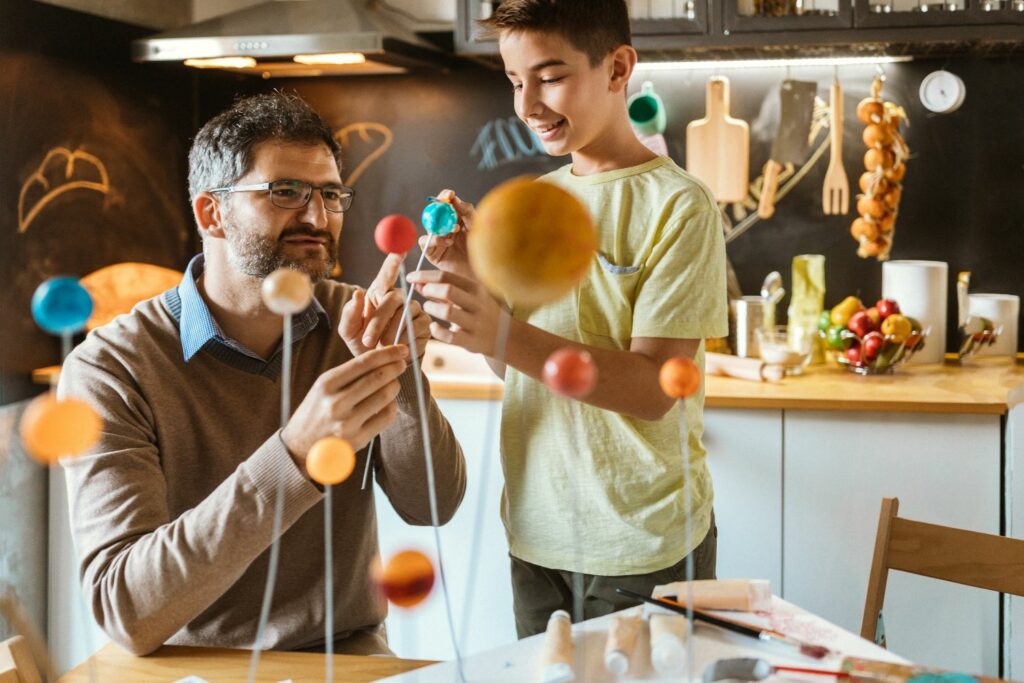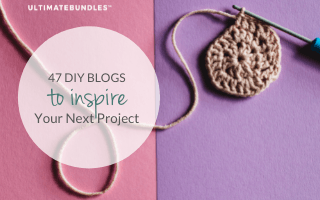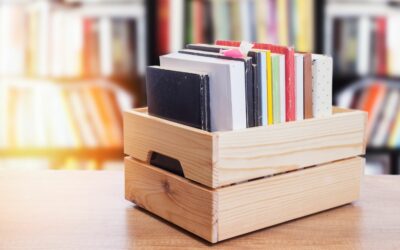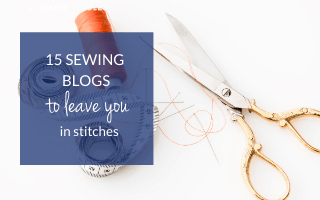Looking for ways to keep your kids entertained and learning at the same time? Crafting is a fantastic way to engage children in fun and educational activities. Today, I’m sharing some amazing educational DIY projects that you can do with your kids. These projects are not only enjoyable but also help develop their creativity, motor skills, and knowledge. Let’s dive into some crafty fun!
Why Educational DIY Projects?
Before we jump into the projects, let’s talk about why educational crafts are so beneficial for kids.
- Hands-On Learning: Kids learn best through hands-on activities that allow them to explore and experiment.
- Creativity and Imagination: Crafting encourages creativity and imagination, helping children to think outside the box.
- Skill Development: DIY projects can improve fine motor skills, hand-eye coordination, and problem-solving abilities.
- Quality Time: Crafting together is a great way to bond and spend quality time with your children.
1. Solar System Model
Creating a solar system model is a fun way for kids to learn about the planets and space. This project combines art and science for an out-of-this-world experience.
Materials:
- Styrofoam balls (various sizes)
- Acrylic paints and brushes
- Wooden dowels or skewers
- Cardboard or foam board (for the base)
- Glue
- Glitter (optional)
Steps:
- Paint the Planets: Paint each Styrofoam ball to represent different planets. Use reference images to get the colors right. Add glitter for a starry effect.
- Prepare the Base: Paint or decorate the cardboard or foam board to look like space.
- Assemble the Model: Insert wooden dowels into the planets and then into the base to arrange them in their orbits.
- Label the Planets: Add labels to identify each planet.

2. Homemade Volcano
This classic science experiment is always a hit with kids. Building and erupting a homemade volcano is a thrilling way to learn about chemical reactions.
Materials:
- Baking soda
- Vinegar
- Dish soap
- Red food coloring
- Plastic bottle
- Cardboard
- Clay or papier-mâché
- Paint and brushes
Steps:
- Build the Volcano: Use clay or papier-mâché to shape a volcano around a plastic bottle, leaving the top open. Attach the volcano to a cardboard base.
- Paint and Decorate: Once the volcano is dry, paint it to look realistic.
- Prepare for Eruption: Fill the bottle halfway with vinegar, a few drops of dish soap, and red food coloring.
- Erupt the Volcano: Add baking soda to the bottle and watch the eruption!
3. DIY Bird Feeder
Making a bird feeder is a wonderful way to teach kids about nature and the importance of caring for wildlife.
Materials:
- Empty plastic bottle or milk carton
- Scissors
- String or twine
- Birdseed
- Paint and brushes
- Wooden spoons (optional)
Steps:
- Prepare the Container: Cut openings in the sides of the plastic bottle or milk carton for birds to access the seed.
- Decorate: Let the kids paint and decorate the bird feeder.
- Add Perches: If using a bottle, insert wooden spoons through the sides to create perches.
- Fill with Birdseed: Fill the feeder with birdseed and hang it outside with string or twine.
4. Magic Milk Experiment
This colorful science experiment is a fun way to explore the properties of milk and soap. It’s simple, mesmerizing, and educational.
Materials:
- Whole milk
- Food coloring
- Dish soap
- Cotton swabs
- Shallow dish or plate
Steps:
- Pour the Milk: Pour enough milk into the dish to cover the bottom.
- Add Food Coloring: Drop several different colors of food coloring onto the surface of the milk.
- Add Soap: Dip a cotton swab in dish soap and touch it to the center of the milk. Watch the colors swirl and mix!
5. Planting Seeds
Planting seeds and watching them grow is a great way to teach kids about biology and responsibility.
Materials:
- Small pots or egg cartons
- Potting soil
- Seeds (e.g., beans, flowers, herbs)
- Water
- Labels
Steps:
- Fill Containers: Fill the pots or egg cartons with potting soil.
- Plant Seeds: Plant the seeds according to the package instructions.
- Water: Water the seeds gently.
- Label: Label each container with the type of seed planted.
- Care: Place the containers in a sunny spot and water regularly. Watch the seeds sprout and grow!
6. Paper Mache Globe
Creating a papier-mâché globe is a fantastic geography project. Kids can learn about continents, oceans, and countries while having fun.
Materials:
- Balloon
- Newspaper strips
- Flour and water (for papier-mâché paste)
- Paint and brushes
- Marker
Steps:
- Inflate Balloon: Inflate a balloon to the desired size.
- Make Paste: Mix flour and water to create a papier-mâché paste.
- Apply Papier-Mâché: Dip newspaper strips in the paste and apply them to the balloon, covering it completely. Let it dry.
- Paint the Globe: Once dry, paint the balloon to look like Earth, with blue oceans and green continents.
- Label: Use a marker to label continents and major bodies of water.
These activities are not only entertaining but also provide valuable learning experiences. By engaging in these crafts, your children will develop important skills, expand their knowledge, and create lasting memories.




Leave a Comment